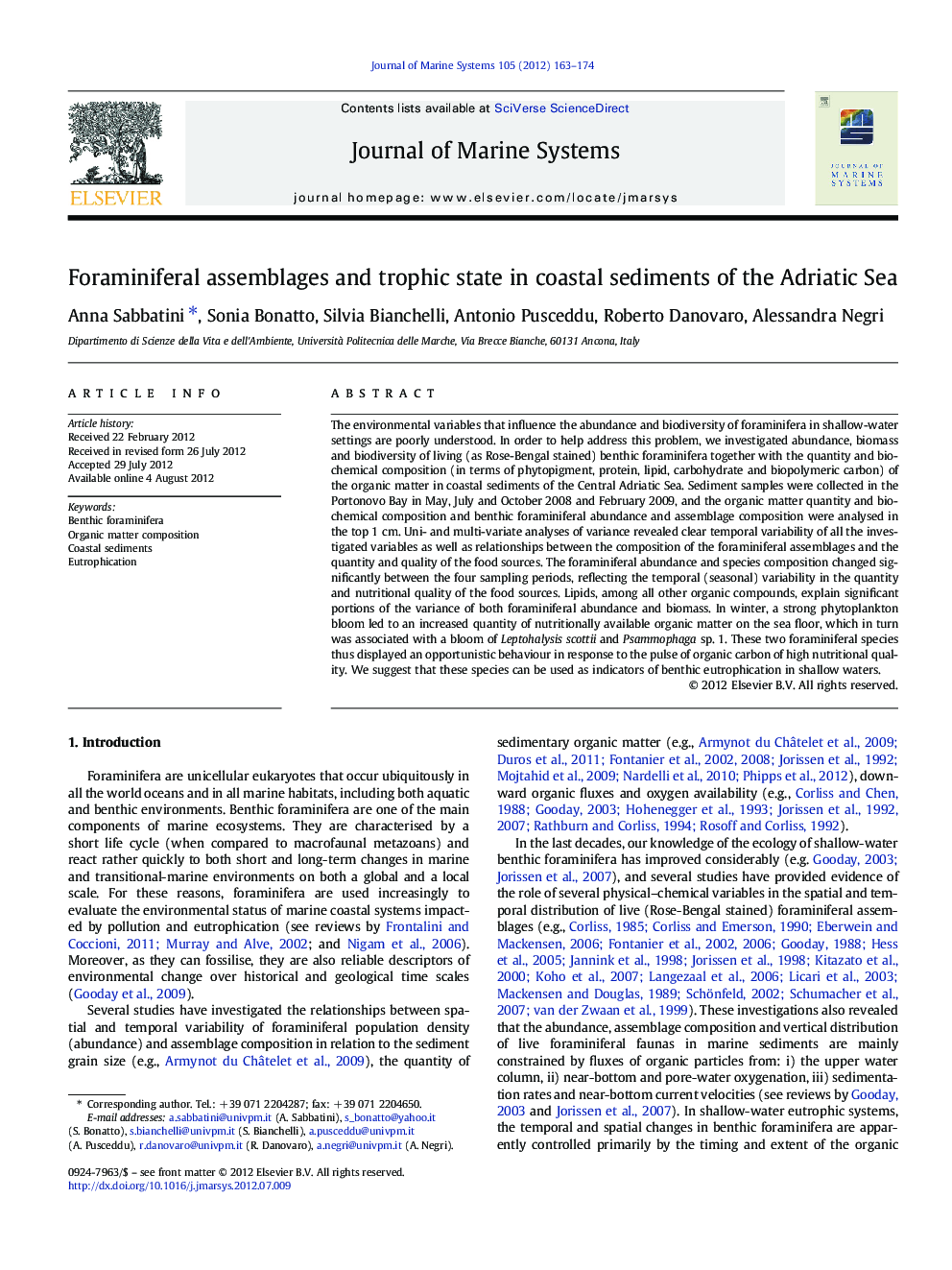| Article ID | Journal | Published Year | Pages | File Type |
|---|---|---|---|---|
| 6387237 | Journal of Marine Systems | 2012 | 12 Pages |
The environmental variables that influence the abundance and biodiversity of foraminifera in shallow-water settings are poorly understood. In order to help address this problem, we investigated abundance, biomass and biodiversity of living (as Rose-Bengal stained) benthic foraminifera together with the quantity and biochemical composition (in terms of phytopigment, protein, lipid, carbohydrate and biopolymeric carbon) of the organic matter in coastal sediments of the Central Adriatic Sea. Sediment samples were collected in the Portonovo Bay in May, July and October 2008 and February 2009, and the organic matter quantity and biochemical composition and benthic foraminiferal abundance and assemblage composition were analysed in the top 1Â cm. Uni- and multi-variate analyses of variance revealed clear temporal variability of all the investigated variables as well as relationships between the composition of the foraminiferal assemblages and the quantity and quality of the food sources. The foraminiferal abundance and species composition changed significantly between the four sampling periods, reflecting the temporal (seasonal) variability in the quantity and nutritional quality of the food sources. Lipids, among all other organic compounds, explain significant portions of the variance of both foraminiferal abundance and biomass. In winter, a strong phytoplankton bloom led to an increased quantity of nutritionally available organic matter on the sea floor, which in turn was associated with a bloom of Leptohalysis scottii and Psammophaga sp. 1. These two foraminiferal species thus displayed an opportunistic behaviour in response to the pulse of organic carbon of high nutritional quality. We suggest that these species can be used as indicators of benthic eutrophication in shallow waters.
⺠We examine relations between foraminifera and the trophic status of coastal samples. ⺠Seasonal variability of food sources is responsible of the foraminiferal variability. ⺠Lipids are among the most vital food items regulating the abundance of foraminifera. ⺠Changes in species composition are driven by proteins and the algal fraction of BPC. ⺠Two opportunistic species are indicative of benthic eutrophication in shallow sea.
